Entries since Xanga’s
August 10 Failure:
Sunday, August 17, 2003 2:00 PM
A Thorny Crown of…

From the first episode of
the television series
“The West Wing“:
|
Original airdate: Sept. 22, 1999
Written by Aaron Sorkin
MARY MARSH
That New York sense of humor. It always–
CALDWELL
Mary, there’s absolutely no need…
MARY MARSH
Please, Reverend, they think they’re so much smarter. They think it’s smart talk. But nobody else does.
JOSH
I’m actually from Connecticut, but that’s neither here nor there. The point is that I hope…
TOBY
She meant Jewish.
[A stunned silence. Everyone stares at Toby.]
TOBY (CONT.)
When she said “New York sense of humor,” she was talking about you and me.
JOSH
You know what, Toby, let’s just not even go there. |
Going There, Part I
|
Crown of Ideas
Kirk Varnedoe, 57, art historian and former curator of the Museum of Modern Art, died Thursday, August 14, 2003.
From his New York Times obituary:
” ‘He loved life in its most tangible forms, and so for him art was as physical and pleasurable as being knocked down by a wave,’ said Adam Gopnik, the writer and a former student of his who collaborated on Mr. Varnedoe’s first big show at the Modern, ‘High & Low.’ ‘Art was always material first — it was never, ever bound by a thorny crown of ideas.’ ”
For a mini-exhibit of ideas in honor of Varnedoe, see
Fahne Hoch.
Verlyn Klinkenborg on Varnedoe:
“I was always struck by the tangibility of the words he used…. It was as if he were laying words down on the table one by one as he used them, like brushes in an artist’s studio. That was why students crowded into his classes and why the National Gallery of Art had overflow audiences for his Mellon Lectures earlier this year. Something synaptic happened when you listened to Kirk Varnedoe, and, remarkably, something synaptic happened when he listened to you. You never knew what you might discover together.”
Perhaps even a “thorny crown of ideas“?
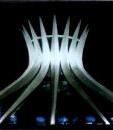
“Crown of Thorns”
Cathedral, Brasilia
Varnedoe’s death coincided with
the Great Blackout of 2003.
“To what extent does this idea of a civic life produced by sense of adversity correspond to actual life in Brasília? I wonder if it is something which the city actually cultivates. Consider, for example the cathedral, on the monumental axis, a circular, concrete framed building whose sixteen ribs are both structural and symbolic, making a structure that reads unambiguously as a crown of thorns; other symbolic elements include the subterranean entrance, the visitor passing through a subterranean passage before emerging in the light of the body of the cathedral. And it is light, shockingly so….”
— Modernist Civic Space: The Case of Brasilia, by Richard J. Williams, Department of History of Art, University of Edinburgh, Scotland
|
Going There, Part II
|
Simple, Bold, Clear
Art historian Kirk Varnedoe was, of course, not the only one to die on the day of the Great Blackout.
Claude Martel, 34, a senior art director of The New York Times Magazine, also died on Thursday, August 14, 2003.
Janet Froelich, the magazine’s art director, describes below a sample of work that she and Martel did together:
“A new world of ideas”

Froelich notes that “the elements are simple, bold, and clear.”
For another example of elements with these qualities, see my journal entry
Fahne Hoch.
The flag design in that entry
might appeal to Aaron Sorkin’s
Christian antisemite:
|

Fahne,
S. H. Cullinane,
Aug. 15, 2003
|

Dr. Mengele,
according to
Hollywood
|
Note that the elements of the flag design have the qualities described so aptly by Froelich– simplicity, boldness, clarity:

They share these qualities with the Elements of Euclid, a treatise on geometrical ideas.
For the manner in which such concepts might serve as, in Gopnik’s memorable phrase, a “thorny crown of ideas,” see
“Geometry for Jews” in
ART WARS: Geometry as Conceptual Art.
See also the discussion of ideas in my journal entry on theology and art titled
Understanding: On Death and Truth
and the discussion of the word “idea” (as well as the word, and the concept, “Aryan”) in the following classic (introduced by poet W. H. Auden):

|
Saturday, August 16, 2003 6:00 AM
Varnedoe’s Crown
Kirk Varnedoe, 57, art historian and former curator of the Museum of Modern Art, died Thursday, August 14, 2003.
From his New York Times obituary:
” ‘He loved life in its most tangible forms, and so for him art was as physical and pleasurable as being knocked down by a wave,’ said Adam Gopnik, the writer and a former student of his who collaborated on Mr. Varnedoe’s first big show at the Modern, ‘High & Low.’ ‘Art was always material first — it was never, ever bound by a thorny crown of ideas.’ “
For a mini-exhibit of ideas in honor of Varnedoe, see
Fahne Hoch.
Verlyn Klinkenborg on Varnedoe:
“I was always struck by the tangibility of the words he used…. It was as if he were laying words down on the table one by one as he used them, like brushes in an artist’s studio. That was why students crowded into his classes and why the National Gallery of Art had overflow audiences for his Mellon Lectures earlier this year. Something synaptic happened when you listened to Kirk Varnedoe, and, remarkably, something synaptic happened when he listened to you. You never knew what you might discover together.”
Perhaps even a “thorny crown of ideas”?

“Crown of Thorns”
Cathedral, Brasilia
Varnedoe’s death coincided with
the Great Blackout of 2003.
“To what extent does this idea of a civic life produced by sense of adversity correspond to actual life in Brasília? I wonder if it is something which the city actually cultivates. Consider, for example the cathedral, on the monumental axis, a circular, concrete framed building whose sixteen ribs are both structural and symbolic, making a structure that reads unambiguously as a crown of thorns; other symbolic elements include the subterranean entrance, the visitor passing through a subterranean passage before emerging in the light of the body of the cathedral. And it is light, shockingly so….”
— Modernist Civic Space: The Case of Brasilia, by Richard J. Williams, Department of History of Art, University of Edinburgh, Scotland
Friday, August 15, 2003 3:30 PM
ART WARS:
The Boys from Brazil
It turns out that the elementary half-square designs used in Diamond Theory

also appear in the work of artist Nicole Sigaud.
Sigaud’s website The ANACOM Project has a page that leads to the artist Athos Bulcão, famous for his work in Brasilia.
From the document
Conceptual Art in an
Authoritarian Political Context:
Brasilia, Brazil,
by Angélica Madeira:
“Athos created unique visual plans, tiles of high poetic significance, icons inseparable from the city.”
As Sigaud notes, two-color diagonally-divided squares play a large part in the art of Bulcão.
The title of Madeira’s article, and the remarks of Anna Chave on the relationship of conceptual/minimalist art to fascist rhetoric (see my May 9, 2003, entries), suggest possible illustrations for a more politicized version of Diamond Theory:
|

Fahne,
S. H. Cullinane,
Aug. 15, 2003
|

Dr. Mengele,
according to
Hollywood
|

Is it safe?
These illustrations were suggested in part by the fact that today is the anniversary of the death of Macbeth, King of Scotland, and in part by the following illustrations from my journal entries of July 13, 2003 comparing a MOMA curator to Lady Macbeth:
Thursday, August 14, 2003 3:45 AM
Famous Last Words
The ending of an Aug. 14 Salon.com article on Mel Gibson’s new film, “The Passion”:
” ‘The Passion’ will most likely offer up the familiar puerile, stereotypical view of the evil Jew calling for Jesus’ blood and the clueless Pilate begging him to reconsider. It is a view guaranteed to stir anew the passions of the rabid Christian, and one that will send the Jews scurrying back to the dark corners of history.”
— Christopher Orlet
“Scurrying”?! The ghost of Joseph Goebbels, who famously portrayed Jews as sewer rats doing just that, must be laughing — perhaps along with the ghost of Lady Diana Mosley (née Mitford), who died Monday.
This goes well with a story that Orlet tells at his website:
“… to me, the most genuine last words are those that arise naturally from the moment, such as

Joseph Goebbels
|
Voltaire’s response to a request that he foreswear Satan: ‘This is no time to make new enemies.’ ”
For a view of Satan as an old, familiar, acquaintance, see the link to Prince Ombra in my entry last October 29 for Goebbels’s birthday.
Wednesday, August 13, 2003 3:00 PM
Best Picture
For some reflections inspired in part by
click here.
Tuesday, August 12, 2003 4:44 PM
Atonement:
A sequel to my entry “Catholic Tastes” of July 27, 2003.
Some remarks of Wallace Stevens that seem appropriate on this date:
“It may be that one life is a punishment
For another, as the son’s life for the father’s.”
— Esthétique du Mal, Wallace Stevens

Joseph Patrick Kennedy, Jr.
“Unless we believe in the hero, what is there
To believe? ….
Devise, devise, and make him of winter’s
Iciest core, a north star, central
In our oblivion, of summer’s
Imagination, the golden rescue:
The bread and wine of the mind….”
— Examination of the Hero in a Time of War, Wallace Stevens
Etymology of “Atonement”:
“Middle English atonen, to be reconciled, from at one, in agreement“
At One
“… We found,
If we found the central evil, the central good….
… we and the diamond globe at last were one.”
— Asides on the Oboe, Wallace Stevens
Tuesday, August 12, 2003 1:52 PM
Franken & ‘Stein,
Attorneys at Law
“Tue August 12, 2003 04:10 AM ET
NEW YORK (Reuters) – Fox News Network is suing humor writer Al Franken for trademark infringement over the phrase ‘fair and balanced’ on the cover of his upcoming book, saying it has been ‘a signature slogan’ of the network since 1996.”

|

Franken:
Fair?
|

‘Stein:
Balanced?
|
For answers, click on the pictures
of Franken and ‘Stein.















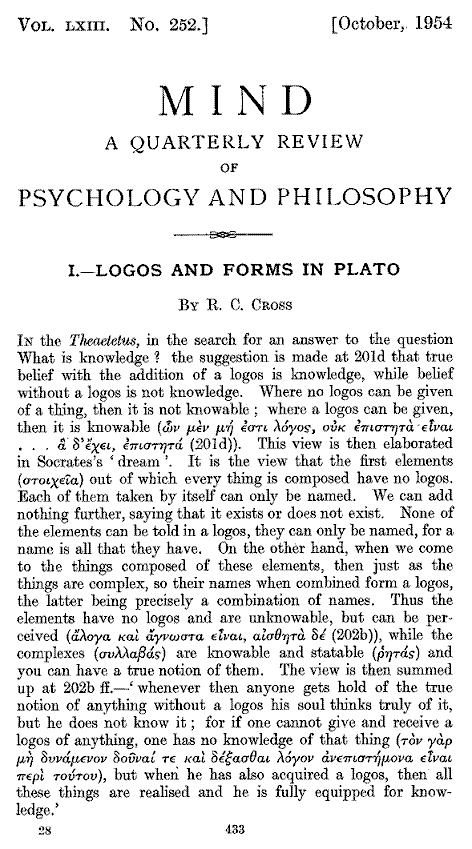

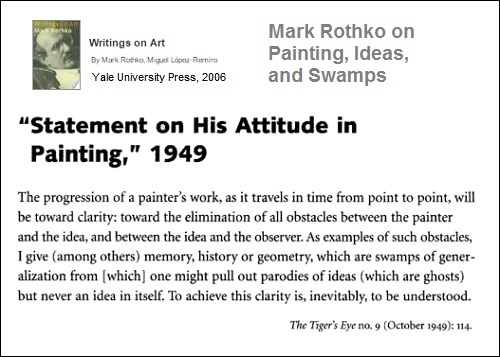
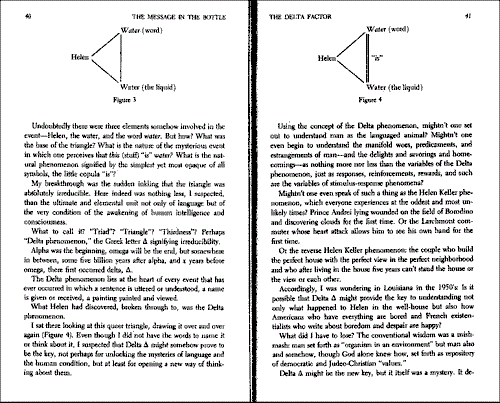













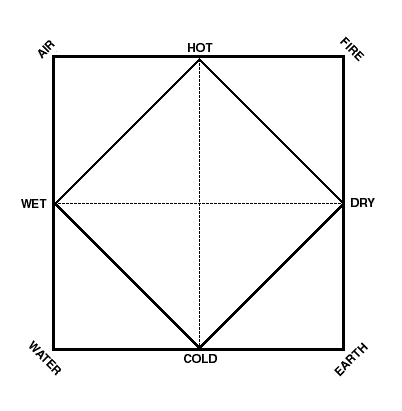








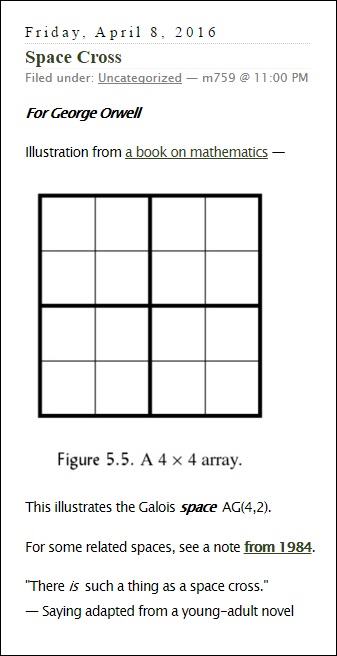


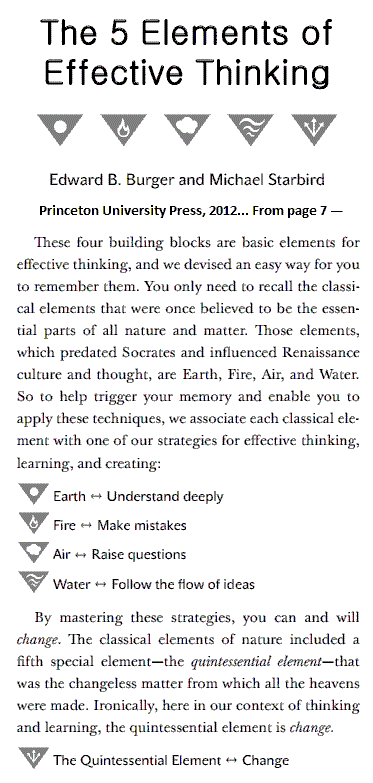






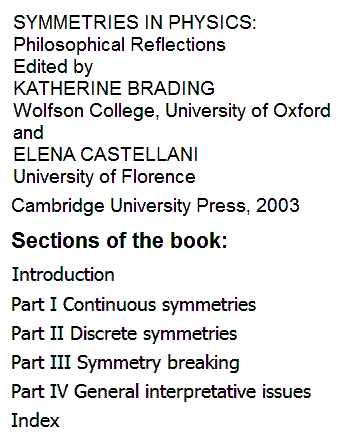
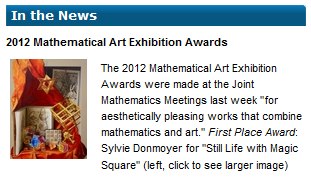









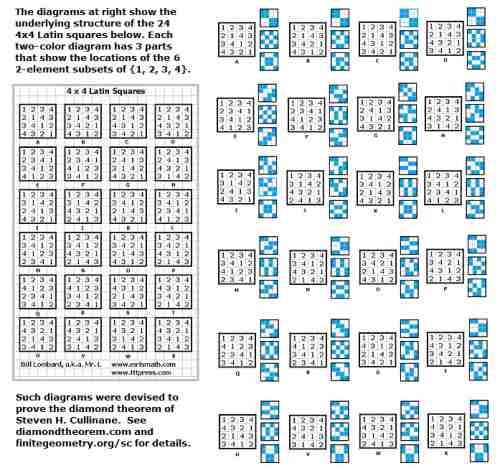
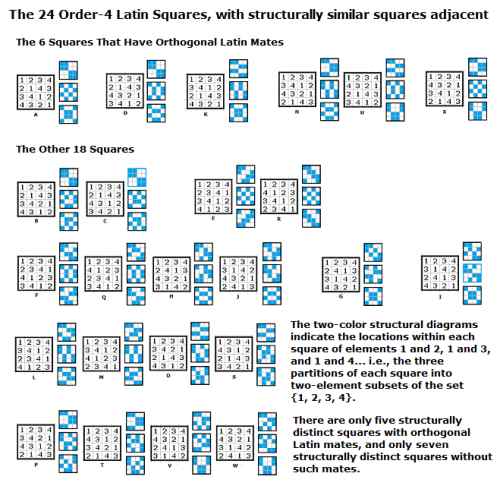












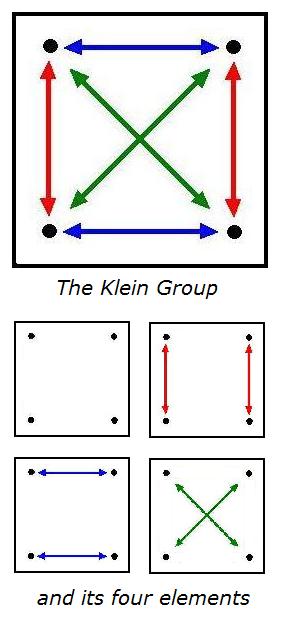




























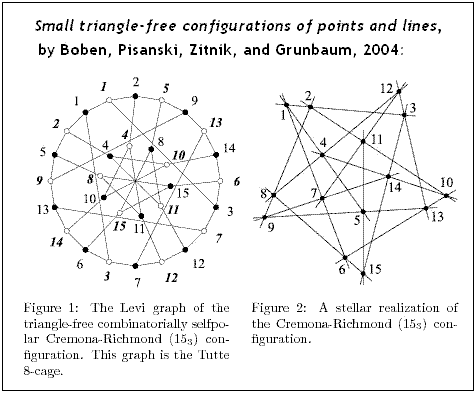
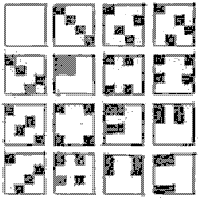





















































 Dagaz: (
Dagaz: ( Temple of Athena Nike on the Nike Bastion, the Acropolis, Athens. Here is a relevant passage from
Temple of Athena Nike on the Nike Bastion, the Acropolis, Athens. Here is a relevant passage from 